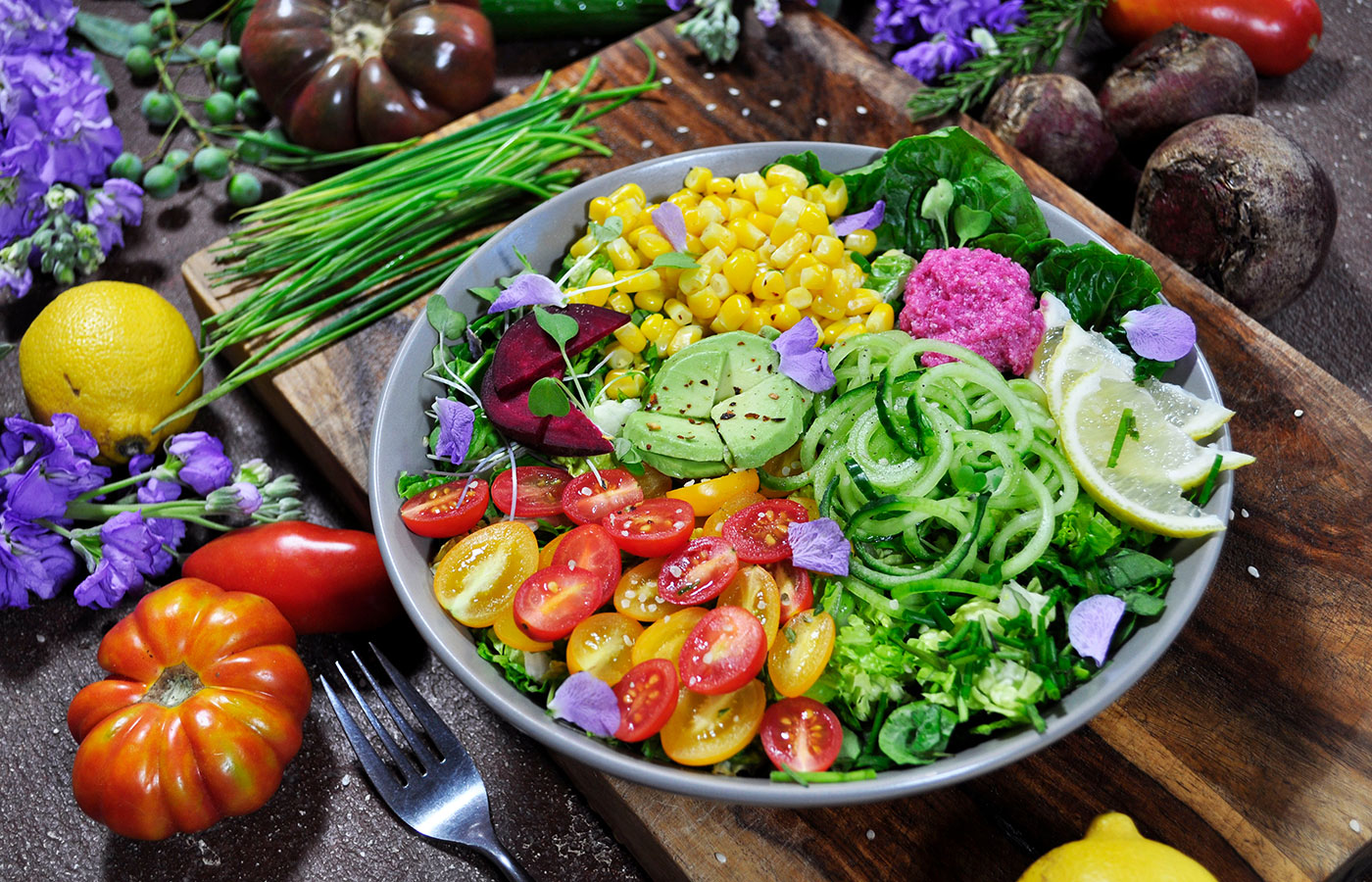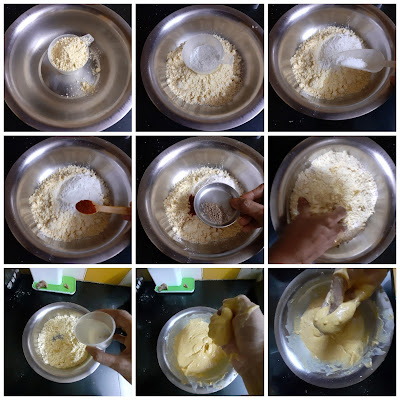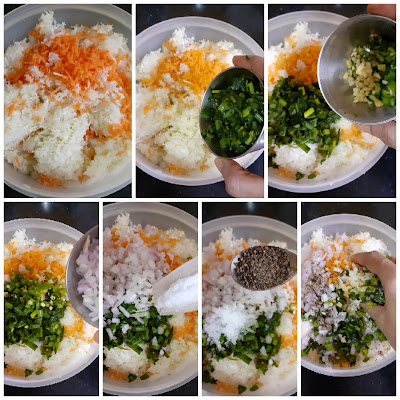Mirchi Bajji or Mirapakaya bajji as it is called in Andhra Pradesh, is popular street food in most South Indian states. The way of making them differs though. This snack is popular in Jaipur/Rajasthan too and the style of making it is different. This snack is made from a particular type of Chilli, called Banana Peppers or Bajji Milagai. They are a light shade of green and huge.
In this recipe, I have followed the Hyderabadi style, wherein the chilli is first processed by slitting it in the centre, de-seeding it, and stuffing it with a paste. The then chillies are coated with chickpea flour batter and deep-fried.
In the Rajasthani style, the Mirchi/chilli is de-seeded and is topped with a spicy mashed potato coating(not stuffed), then dipped in chickpea batter and then fried.
In some other states in South India, the chillies are just deseeded and then dipped in batter and deep-fried. This version is not the best way to make this bajjis though. The stuffing is what makes all the difference.
I am getting to the recipe without much ado. I request you to have a look at my other snack recipes like Semolina Cheese Balls, Kothimbir Vadi, Dahi Pohe/Moru Aval, Masala Wheat flour Papdis, and more..,
Here is the recipe for Mirchi Bajji/Mirapakaya Bajji for you-
Ingredients for stuffing:
Chickpea flour/Besan 2 cups
Tamarind paste 1 tbsp or Tamarind pulp 1 cup(refer note1)
Salt as required
Red chilli powder 1/2 to 1 tsp
Ajwain seeds/Omam 1 tsp
Water as required(if using tamarind paste)
Ingredients for batter:
Besan/ Chickpea flour 2 cups
Rice flour 1/4 cup
Salt as required
Red chilli powder 1 tsp
Ajwain 1/2 tsp
Hot oil 1 tbsp
Ingredients for Mirchi Bajji:
Bajji Chillies 12 numbers
Oil for deep frying
Processing the Bajji Chilli:
Wash then and pat them dry. With a sharp knife make a lengthwise slit in the center and remove the seeds complete with your fingers, or spoon. Be very gently or they may break. The chilli should be clean on the inside and devoid of any seeds.
Directions for making Mirchi Bajji:
Once the processing of the Chillies is done, take all ingredients mentioned under stuffing except water and mix them well with your fingers. Now add water little by little to make a dough, which is neither too stiff nor too loose. (this procedure is if using tamarind paste)
If using tamarind pulp then take all ingredients mentioned under stuffing, in a bowl and combine them to form a dough, using the tamarind pulp.
Now make small cylinders out of this stuffing dough and stuff it into the chillies. Note that the chillies need not be fully stuffed, making a cylinder of them ensures that the stuffing is there from stalk to tip. Repeat for all chillies.
Now take all ingredients mentioned under batter, except water and mix well with your fingers. Adding water little by little, form a batter that is not too flowy. It should be thick enough to coat the chilli. The chilli surface is very smooth and slippery. so the natter has to be a little thick(refer picture). After making the batter, put oil for deep frying in a Kadai and heat. Bring the oil to smoke point and reduce heat completely. Pour 1 tbsp of this oil into the batter, and mix the batter nicely with a spoon(be careful not to use your hands, the oil is very hot). The hot oil does the job of baking soda here, and make your bajji turn fluffy and crisp(secret out😀). Now it is time for frying. Holding the chilli by the stalk, dip it into the batter, use your fingers if required to coat the chilli well and drop them gently into the hot oil. Fry on medium-high until it turns a nice brown in colour. To serve, sprinkle some Chaat masala and enjoy. Bon Appetit.
STEPWISE RECIPE FOLLOWS:
1. Assemble all ingredients. Follow the processing of chillies step and set them aside.
2. This step is if you are using tamarind paste- take all ingredients mentioned under stuffing except water and mix them well with your fingers. Now add water little by little to make a dough, which is neither too stiff nor too loose. (if following this step ignore step 3)
3. This step is if you are using tamarind pulp: take all ingredients mentioned under stuffing, in a bowl and combine them to form a dough, using the tamarind pulp.
( PICTURES SAME AS ABOVE, USE TAMARIND PULP INSTEAD OF WATER)
4. Now make small cylinders out of this stuffing dough and stuff it into the chillies. Note that the chillies need not be fully stuffed, making a cylinder of them ensures that the stuffing is there from stalk to tip. Repeat for all chillies.
5. Now take all ingredients mentioned under batter, except water and mix well with your fingers. Adding water little by little, form a batter that is not too flowy. It should be thick enough to coat the chilli.
6. After making the batter, put oil for deep frying in a Kadai and heat. Bring the oil to smoke point and reduce heat completely. Pour 1 tbsp of this oil into the batter, and mix the batter nicely with a spoon(be careful not to use your hands, the oil is very hot).
7. Holding the chilli by the stalk, dip it into the batter, use your fingers if required to coat the chilli well and drop them gently into the hot oil. Fry on medium-high until it turns a nice brown in colour.
NOTES:
1. I usually make a paste of tamarind and keep it handy. This post is on my Facebook and Instagram handles. I will try to share that in the blog sometime soon. Store-bought paste also can be used, quantity should be 1.5 tbsp. If using store-bought paste, decrease the amount of salt in the stuffing.
2. For making Tamarind pulp take lemon size ball of tamarind, soak in warm water for 5-10 minutes and extract a pulp that comes to 1 cup. Use this to make the stuffing dough.
3. Pouring hot oil into the Bajji batter does the job of soda. It makes the Bajji fluffy and crisp and also gives it a good colour.
4. While frying these Bajjis patience is required and fry them in high heat will give you an uncooked stuffing.
If you tried this recipe and liked it please comment below. I would love to hear from you. If you have a query about the recipe email us and ill respond as soon as I can.





















































